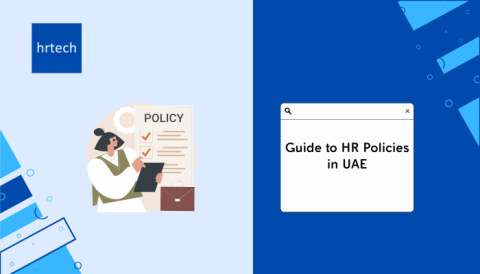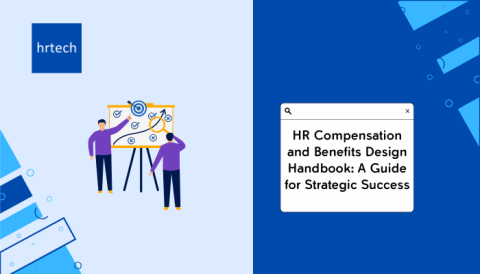Recruitment is one of the most critical functions for any organization, directly impacting its growth, culture, and competitive positioning. Studies show that a lengthy hiring process can be costly and inefficient: according to the Society for Human Resource Management (SHRM), the average time-to-fill position is 36 days, with some roles taking even longer. This lag can cost organizations an average of $4,129 per hire in lost productivity and operational delays.
This guide provides actionable insights and proven methods to help you fast recruit without sacrificing quality. We’ll cover each step of the recruitment process, from preparation and sourcing to interviewing, decision-making, onboarding, and retention. Each section offers tips to create a streamlined process that minimizes time-to-hire while still identifying and securing the best talent. By adopting these strategies, you’ll be equipped to build an effective, fast recruitment process that supports your organization’s growth and competitive advantage in the market.
Why It’s Essential to Recruit Fast
Long hiring processes can delay productivity, create high costs, and ultimately cause you to miss out on top talent. Research by the Society for Human Resource Management For competitive industries, particularly in technology and executive roles, these numbers can rise even higher, leading to missed revenue opportunities and higher workloads for existing employees. Here are the primary reasons to adopt a fast recruitment process:
- Increased Efficiency: Fast recruitment saves time and reduces the financial burden associated with long vacancy periods.
- Enhanced Candidate Experience: Lengthy hiring processes can drive candidates away, especially top talent. Glassdoor reports that 57% of candidates lose interest if the process drags out, reinforcing the need to recruit fast.
- Competitive Advantage: Quick hiring helps you secure talent before other companies make offers, making fast recruitment a significant advantage in talent-scarce markets.
The following sections provide detailed steps and practical strategies to help you recruit fast, attract quality talent, and ensure a streamlined hiring experience. Using tools available in hrtech marketplaces can make these processes even more efficient by providing access to innovative recruitment solutions like Applicant Tracking Systems (ATS), skills assessments, and onboarding platforms, all in one convenient place.
Tips for hiring the best employees
Hiring the best employees is crucial for the growth and success of any organization. Not only does hiring top talent enhance productivity, but it also positively impacts company culture and reduces turnover. In competitive job markets, where top candidates are in high demand, it’s important to fast recruit to secure high-quality hires. Below are essential tips for hiring the best employees efficiently, while ensuring they align with your company’s goals and values.
1. Write Great Job Descriptions
Creating clear, concise, and informative job descriptions is one of the first steps to recruit fast. Job descriptions serve as the first point of contact between you and potential candidates, so they should accurately convey the responsibilities, requirements, and unique aspects of the role.
A study by Jobvite indicated that 60% of job seekers consider job descriptions the most important factor when deciding whether to apply for a job. Clear and engaging job descriptions can lead to a 14% increase in applications.
- Clarifies Role Requirements: List specific responsibilities and required skills to ensure only relevant candidates apply.
- Highlights Unique Selling Points: Describe what sets your organization apart (e.g., remote work options, development opportunities).
- Encourages a Quick Application Process: A clear, straightforward job description encourages interested candidates to apply promptly
2. Focus on the Candidate Experience
Candidate experience is critical to recruiting fast. Positive experiences keep candidates engaged and improve your reputation as an employer, while negative experiences can drive potential hires away. According to Glassdoor, 80% of candidates are less likely to reapply to a company after a poor experience.
- Prompt Communication: Keep candidates informed throughout the hiring process, from initial application acknowledgment to final decision-making.
- User-Friendly Application Process: Avoid lengthy forms and complicated application procedures. Simplified applications reduce drop-off rates and help you recruit fast.
- Clear Job Details: Providing information on salary, benefits, and company culture helps candidates make informed decisions and reduces time spent in clarifying these points.
3. Embrace Skills-Based Recruitment
Skills-based recruitment is a proven way to recruit fast by focusing on a candidate’s ability rather than traditional qualifications. According to LinkedIn’s Global Talent Trends report, 61% of hiring managers believe that skills are more important than experience when evaluating candidates.
- Use Pre-Employment Assessments: Test candidates for relevant skills using platforms like TestGorilla, which allows you to quickly identify those with the capabilities to succeed in the role.
- Focus on Skills over Resumes: Look for demonstrated skills rather than strictly adhering to years of experience or educational background, especially in tech and creative fields.
- Customize Assessments for Role Relevance: Tailor assessments to the skills and competencies that matter most for the job.
Skills-based recruitment enables you to recruit fast by prioritizing practical abilities, reducing the time spent on back-and-forth resume reviews
4. Improve the Interview Process
A well-structured interview process is essential for recruiting fast. An overly complex or lengthy interview process can cause delays and lead to candidate drop-off. Data from Robert Half shows that 39% of job seekers lose interest if they don’t hear back within two weeks after an interview.
- Limit Interview Stages: Streamline the number of interviews by combining steps when possible. Aim to complete the interview process within one to two weeks.
- Conduct Structured Interviews: Ask each candidate the same set of questions. Structured interviews help reduce bias, make it easier to compare candidates, and speed up the decision-making process.
- Use Virtual Interviews for Flexibility: Video interviews eliminate travel time and make scheduling easier, especially for remote roles. Virtual interviews can be just as effective as in-person meetings and allow you to recruit fast by making the process more efficient.
5. Offer Remote Work Options
Offering remote work options not only widens your candidate pool but also helps you recruit fast by removing geographical barriers. A study by PwC found that 72% of employees prefer a mix of remote and in-office work, and remote options are particularly attractive to candidates in competitive fields like technology and marketing.
- Expanded Talent Pool: Remote roles allow you to recruit fast by reaching qualified candidates from different locations.
- Increased Appeal: Many candidates now prioritize flexibility, with remote work options ranking as one of the top perks when evaluating job opportunities.
- Reduced Onboarding Time: Remote hires can often start sooner, as they don’t need to relocate, allowing you to fill roles faster.
6. Use Recruitment Tools
Recruitment tools like Applicant Tracking Systems (ATS) and skills assessment platforms play a crucial role in helping companies recruit fast. A survey by CareerPlug found that companies using ATS report a 15% faster hiring process.
- ATS : ATS tracking software helps organize candidate data, track applications, and automate communication, enabling faster screening.
- Assessment Platforms: Skills assessment tools allow you to evaluate specific competencies and filter out unqualified candidates early.
- Interview Scheduling Software: Automates the scheduling process and reduces time spent coordinating with candidates.
Investing in recruitment technology optimizes your workflow, helps you track candidates efficiently, and allows you to recruit fast without sacrificing quality.
7. Offer Training and Development Opportunities
Candidates are more likely to accept offers and stay longer when they see opportunities for growth and development within an organization. LinkedIn’s Workforce Learning Report reveals that 94% of employees would stay at a company longer if it invested in their career development.
- Highlight Training Programs in Job Descriptions: Mention any professional development programs available to new hires.
- Promote Career Paths: Show how employees can grow within your organization, making it clear that your company invests in its workforce.
- Incorporate Development into Onboarding: Provide resources and guidance for personal and professional development during onboarding.
Development opportunities not only attract quality candidates but also increase employee retention, ensuring you don’t have to rehire for the same role frequently.
8. Pay Attention to Employer Branding
Strong employer branding attracts candidates and helps you recruit fast by building a reputation as an employer of choice. According to LinkedIn, companies with a strong employer brand see 50% more qualified applicants and experience a 28% reduction in turnover.
- Showcase Company Culture: Use social media and your website to display your company’s values, employee testimonials, and achievements.
- Encourage Employee Advocacy: Current employees are often the best advocates for your company. Encourage them to share their positive experiences on platforms like Glassdoor.
- Maintain Transparency: Be upfront about company culture, expectations, and growth opportunities in job descriptions.
Employer branding helps attract candidates who align with your values, reducing time spent on screening and improving retention.
9. Practice Wage Transparency
Transparent pay practices not only improve candidate trust but also help streamline the hiring process. According to a study by LinkedIn, 67% of job seekers consider salary transparency to be essential when applying for roles.
- Attracts Serious Candidates: Candidates who are clear about salary expectations are more likely to remain in the hiring process, which helps reduce last-minute drop-offs.
- Minimizes Negotiation Time: When compensation expectations are clear, the negotiation phase is quicker, enabling you to recruit fast and close offers.
- Builds Trust: Transparent pay policies demonstrate fairness, which can enhance your employer brand and attract high-quality talent.
Streamlining the Decision-Making Process
After interviews are complete, prompt decision-making is essential to fast recruit. Prolonged delays in this stage can result in losing candidates to competing offers.
A. Set Clear Internal Deadlines
Establishing firm internal deadlines for each stage of the hiring process is essential for creating a streamlined and efficient workflow in your fast recruit strategy. Clear timelines help maintain momentum, reduce bottlenecks, and ensure candidates don’t lose interest while waiting.
For example, aim to screen resumes within three days of submission, conduct initial interviews within a week, and complete the entire interview process within two weeks. By setting these expectations upfront with your hiring team and stakeholders, everyone can stay aligned on timing and work toward the same goal: a fast, efficient hiring process that keeps top talent engaged.
B. Make Conditional Offers Quickly
When you identify a standout candidate, moving quickly is crucial for a successful fast recruit approach. One effective method is to extend a conditional offer while pending background checks, reference verifications, or final approvals are completed. This approach allows you to secure high-potential talent early in the process, minimizing the risk of losing them to competing offers.
Communicate clearly with the candidate about the conditions and expected timeline for the final offer to maintain transparency and trust. This tactic not only demonstrates your interest but also positions you as an agile and decisive employer, qualities that are attractive to top candidates.
C. Collaborate for Quick Consensus
Efficient decision-making often hinges on effective collaboration, a key aspect of any fast recruit strategy. Engaging all relevant stakeholders early in the hiring process helps streamline feedback and enables a quicker consensus on hiring decisions. Start by defining each team member’s role in the hiring process and setting up structured touchpoints, such as post-interview debriefs, to share insights and opinions.
Using collaborative tools like shared feedback forms or video meetings after each interview stage can expedite the feedback loop. By having decision-makers involved and aligned from the start, you can reduce delays and quickly extend offers to your preferred candidates.
D. Use Technology to Streamline Workflow
A fast recruit approach is supported by leveraging recruitment technology to automate repetitive tasks and enhance communication. Applicant tracking systems (ATS) can help keep resumes organized, track candidate progress, and set automated reminders for review deadlines.
Video interviewing tools can shorten the scheduling time and allow for more flexible interview formats, accelerating the hiring timeline. Additionally, tools that provide automated assessments or skills tests can help quickly identify top candidates and reduce the time spent on initial screening. By incorporating technology effectively, you can remove much of the administrative burden and focus on strategic, high-value recruitment activities.
E. Prepare for Onboarding in Advance
Preparing the onboarding process before a candidate is hired contributes to a seamless fast recruit strategy. Having all the necessary materials, tools, and onboarding schedules ready to go before the new hire’s start date allows you to immediately begin the onboarding process, ensuring a smooth transition from hire to productive team member.
By planning ahead, you also reduce the time spent coordinating onboarding logistics after the hire, further speeding up the overall recruitment timeline and ensuring new hires feel welcomed and engaged from day one.
F. Maintain a Talent Pipeline
A well-maintained talent pipeline is an invaluable asset for a fast recruit strategy, significantly reducing time-to-hire. Continuously building and nurturing relationships with potential candidates—even when you don’t have an immediate opening—ensures you have a pool of pre-qualified talent ready when a position becomes available.
By engaging with passive candidates, attending industry events, and keeping in touch with former applicants, you can establish a network of prospects who are already familiar with your organization. When a hiring need arises, tapping into this pipeline allows you to accelerate the process by starting with a list of already vetted candidates, enabling you to recruit fast and efficiently without sacrificing quality.
Retaining New Hires with Effective Onboarding and Engagement
Once a candidate accepts an offer, the onboarding process becomes crucial to retaining them and ensuring a smooth transition into their role. Effective onboarding is a core part of a fast recruit strategy, as it not only accelerates a new hire’s integration but also strengthens their connection to the organization. Engaging new hires from day one through clear role expectations, comprehensive training, and early team-building activities can significantly reduce turnover and improve job satisfaction.
| Strategy | Description |
| Begin Onboarding Before Day One | Send essential documents, schedules, and introductions in advance to help new hires feel prepared and welcomed. |
| Assign a Mentor for Faster Adaptation | Provide a mentor as a go-to for questions and support, accelerating new hires’ comfort and productivity. |
| Emphasize Continuous Development | Offer resources for skill-building, such as training sessions and development programs, to show commitment to their growth. |
| Create a Welcoming First Day | Arrange for team introductions, a workspace setup, and a welcome kit to make new hires feel valued from day one. |
| Set Clear Role Expectations | Clearly outline job responsibilities and performance goals to reduce uncertainty and align expectations. |
| Conduct Regular Check-Ins | Schedule frequent one-on-one meetings to provide feedback, address questions, and offer guidance in the first few months. |
Key Metrics to Track for Faster Recruitment
Tracking key metrics allows you to identify bottlenecks, make adjustments, and continually improve your recruitment process.
A. Time-to-Hire
Time-to-hire measures how long it takes from the job posting to offer acceptance. According to SHRM, the average time-to-hire in the U.S. is 24 days, but top companies aim for 15-20 days for competitive roles.
B. Candidate Drop-Off Rate
This metric tracks the percentage of candidates who abandon the hiring process. High drop-off rates can indicate an overly complicated process. Reducing the number of interviews or improving communication can help minimize drop-offs.
C. Offer Acceptance Rate
This measures the percentage of offers accepted versus declined. A low acceptance rate may signal issues with salary, benefits, or the hiring timeline. By monitoring this rate, you can identify areas for improvement and recruit fast with better results.
Balancing Speed and Quality in Fast Recruitment
Recruiting fast doesn’t mean rushing the process—it means creating a structured, efficient system that brings top talent on board quickly. By implementing strategies such as clear job descriptions, a positive candidate experience, skills-based recruitment, streamlined interviews, and employer branding, you can reduce time-to-hire while maintaining high-quality standards.
Fast recruitment is not just about filling roles; it’s about building a dynamic, motivated team that can adapt to your organization’s needs. By focusing on efficient preparation, sourcing, interviewing, and onboarding, you ensure that your hiring process is both swift and effective, giving you a competitive advantage in attracting the best talent.
Whether you’re looking for tools to automate workflows or enhance candidate assessments, reach out to us today and discover how hrtech can help you recruit fast and build a team that truly supports your business goals.





